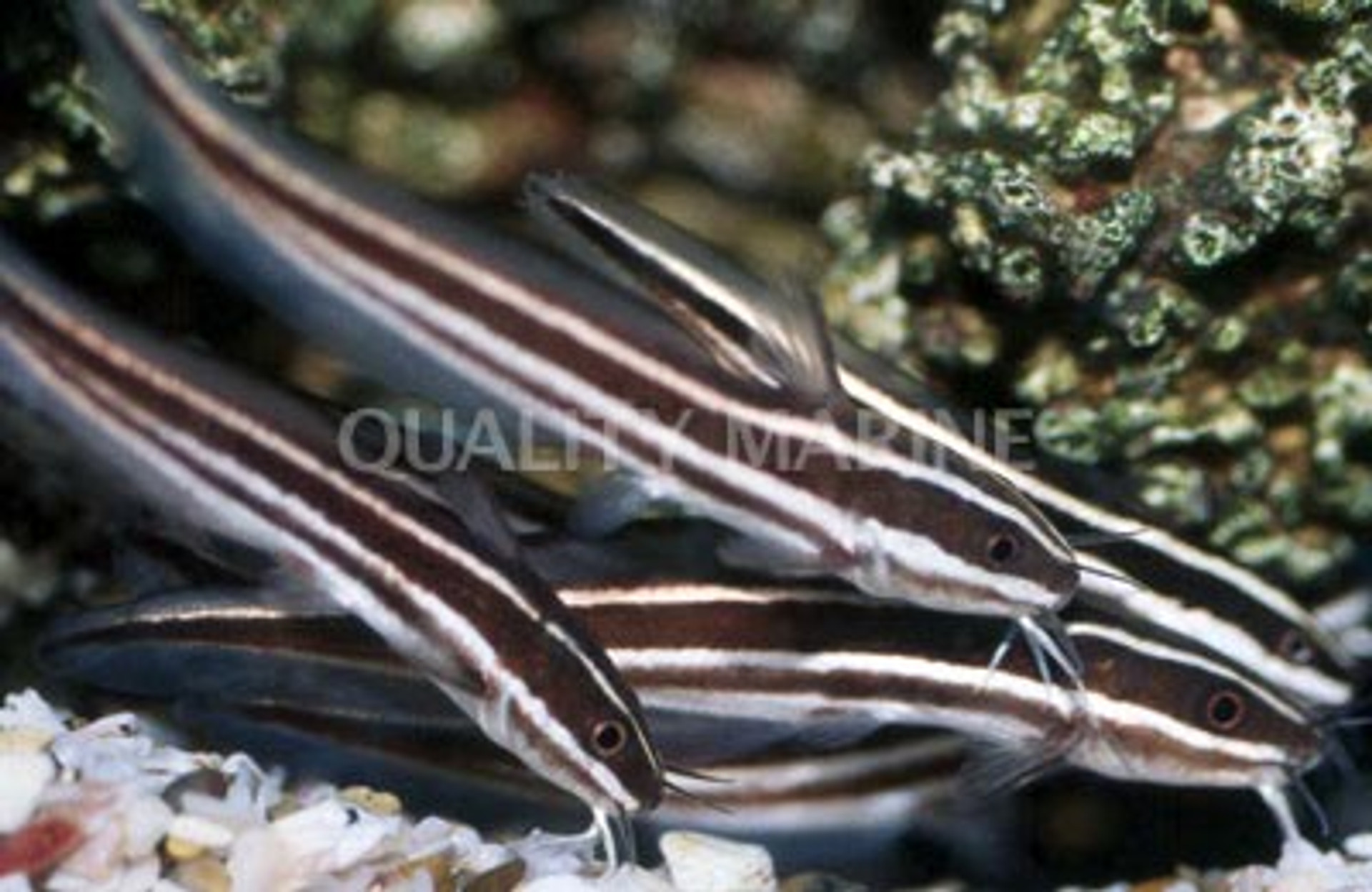Coral Catfish (Plotosus lineatus)

Catfish arent exactly the sort of thing one might expect to find on a coral reef. The group is well-known from rivers, lakes, and swamps, but theres also a small number of species (out of the 3,000 or so in the order Siluriformes) which occur in marine ecosystems. One saltwater example aquarists should already be familiar with is Ariopsis seemanni, the Columbian or White Tip Shark Catfish, found in estuaries along the western coastline of the Americas.
Plotosidae is by far the most diverse family of marine catfishes, though it is still relatively small, at around 40 species. More than half of these are freshwater fishes found in either Australia or New Guinea, and most others are brackish water specialists. True marine representatives are found among Paraplotosus and Plotosus. The former has three species, one of which is widespread in the Coral Triangle, and they are mostly found in turbid marine environments, (though occasionally also on coral reefs) and are very uncommon in captivity.
Plotosus are the true coral catfishes, though that common name really only applies to two of the nine species in the genus. Plotosus lineatus is the most widespread in the Indo-Pacific, absent only from Polynesia, while the nearly identical P. japonicus is a recently recognized relative endemic to Japan. The two are nearly identical externally and told apart by subtle skeletal differences and the relative shape of their dendritic organ. This structure is common to several marine plotosids; its highly vascularized tissues have led to the hypothesis that it functions as a salt-secreting organ.
P. lineatus is common in sandy environments around coral reefs, as well as lagoons and bays. One study showed it strongly favored areas populated by the alga Caulerpa serrulata f. spiralis, largely ignoring seemingly similar habitats populated by Caulerpa racemosa f. peltata or the seagrasses Enhalus and Halophila. This is thought to do with the varying composition of the invertebrate communities, which Plotosus feeds upon. Gut content studies show juvenile crabs, along with other crustaceans and gastropods, forming the bulk of the diet.
The species is well-known for the dense feeding balls formed by juveniles, which slowly traverse the sands like a steamroller in search of prey. This takes place during the day, but the adults are largely solitary and nocturnal, found hiding under reef ledges until the sun goes down. The species has been reported to be short-lived in the wild, with specimens over two years being uncommon (though aquarium specimens are likely to live far longer). Squids have been shown to be a potential predator, but most piscivores are likely to avoid this fish thanks to its potent defensive toxins.
If aquarists remember one fact about the Coral Catfish, it should be this: the dorsal and pectoral spines contain what is possibly the most potent venom of any fish. Though very rare, human fatalities have been reported, and the sting is guaranteed to be a most painful experience. Aside from the venom glands, the skin itself secretes a toxin, providing a nasty one-two punch. The most likely way an aquarist might get stung is while netting a specimen, though this should ideally never be done given the likelihood of the serrated fin spines getting snagged on a typical fish net. Try using a specimen container or a suitable plastic container or a finer-mesh net (like a brine shrimp net). Incidentally, it is quite safe to eat Plotosus.
The species is commonly available to aquarists, usually as juveniles. These form a tight ball much of the time, but will eventually mature into a potentially footlong adult (the average size is closer to 8-10 inches). As with any large catfish, the diet will include anything that can be engulfed into their rather capacious mouth, which generally makes Plotosus most appropriate for FOWLR systems. Of course, they dont concern themselves with eating corals, so its not impossible to keep one in a reef tank just very limiting.
Plotosus is truly a fascinating fish, and theres barely time to touch on all the interesting interspecies relationships it forms. There are Batesian mimics, seen with the juvenile swarms of Pholidichthys leucotaenia, the Convict Blenny/Engineer Goby. The shrimpfish Aeoliscus strigatus does something similar. And then there are all the fishes that follow around behind the Plotosus feeding balls to mop up any leftovers. Here youll find Arothron pufferfishes and Parapercis sand perches, Goniistius morwongs and Diploprion soapfishes. Perhaps in a large enough aquarium, one could recreate these unique communities, but, for most, a single specimen of Plotosus will suffice.